Buddhist Literature unveils various pageants and festivities held in
great honor of Lord Buddha. The Perahera pageant concept became
popular during the reign of Emperor Asoka of India. Kandy Perahera
pageant really pageant which displays traditional customs. Majority of
them been intermingled with the Buddhist and Hindu religious customs.
Yet they display and highlight the great value of the Sinhala culture.
Most of the customs have taken from on statues stated in the
“Dantha Dhathu Charitha” or “Dalada Siritha” (a book
on the customs pertaining on the sacred Tooth Relic) Written during
the regime of Parakramabahu IV (1302-1326) of Kurunagala. The Dalada
Siritha stated 38 statutes, on which a Perahera pageant should be
conducted.
Accordingly, the Shrine Room of the Sacred Tooth Relic should be cleaned at the auspicious hour. canopies should be tied, should be decorated beautifully with various silk clothes; The king team of ministers and general public of the city should make offering of rice, flowers and light oil lamps on the 7th day morning, the city should be decorated like the heaven on the same day evening, the chief priests of Uttara Mula Sect personnel of two castes Ganavesi and Kilin should move the Sacred Relic casked with utmost veneration. These rites were performed annually. Even today rights were performed accordingly.
Reference: https://kandyesalaperahera.com/about/
A ritual called the Esala Perahera is performed to ask the gods for rain.
The Sacred Tooth Relic of Buddha was brought to Sri Lanka during King Kithsirimewan's reign.
The Chinese pilgrim Fa Hien visited Sri Lanka and recorded an account of the Esala Perahera.
The custody of the Sacred Tooth Relic was entrusted to the Buddhist clergy after the Kandyan Convention.
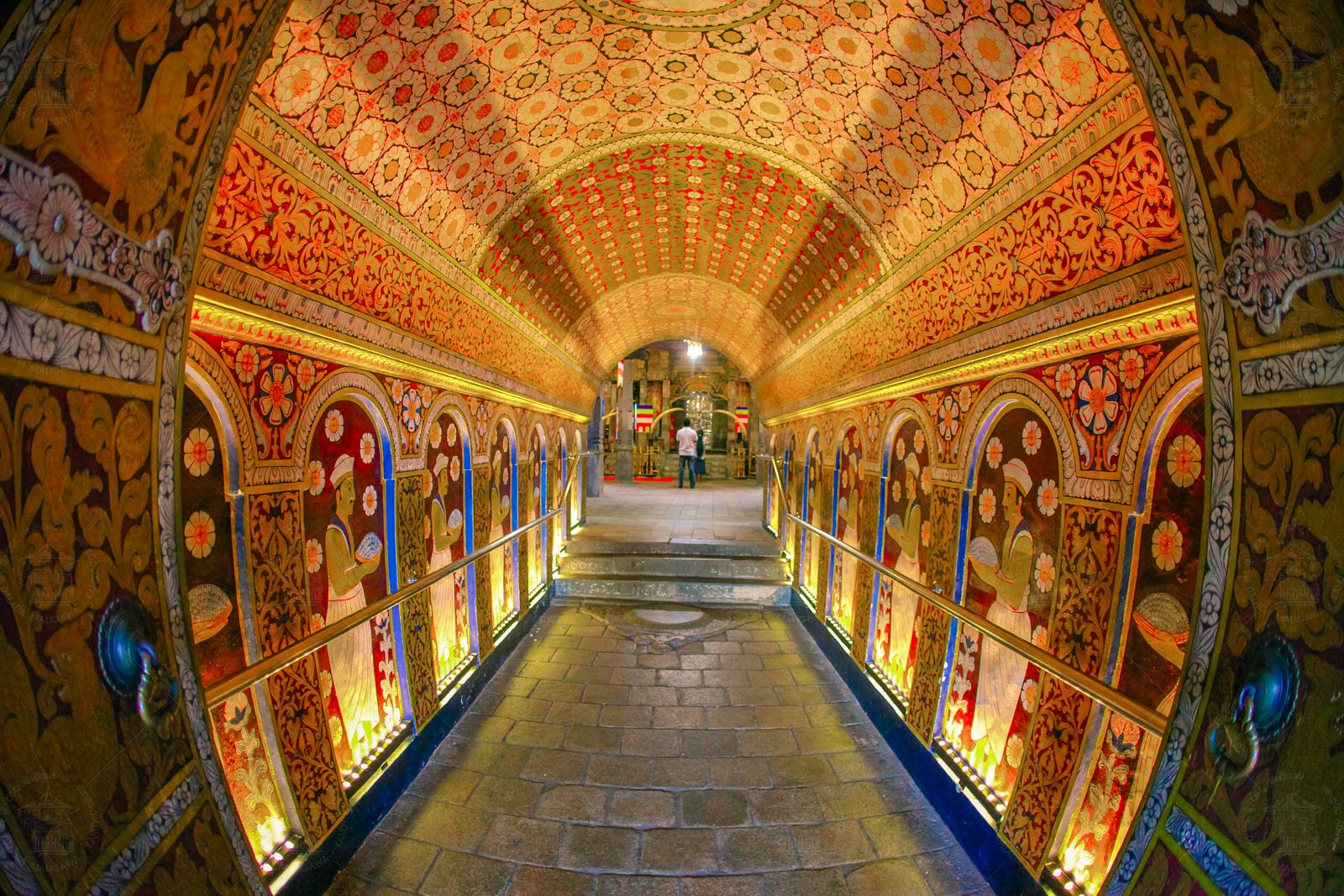



Here are the Scheduled Official Dates
The first procession of the Sacred Tooth Relic starts with the Kumbal Perahera. This is the first Kumbal Perahera shown to the infants to drive away evil spells and ill will. Traditionally, the procession parades the streets of Kandy for five days. However, the Kumbal Perahera is known as a semi-procession, as Nilames do not participate. Drummers and tuskers take part, but without ceremonial costumes.
The Randoli Perahera is held only with the procession of the Sacred Tooth Relic and continues for five days. Historically, the Chief Queens of the Kings participated by parading in palanquins. Though queens no longer appear in the procession, a palanquin is still carried to honor them. Each of the four Devalas carries its own decorated palanquin with sacred items, maintaining its ceremonial value.
The Maha Randoli Perahera is the grand finale of the Kandy Esala Perahera. This final procession is the most spectacular. Tuskers are adorned with garlands and richly decorated with gold-stitched garments. Drummers wear full ceremonial dress, and the Diyawadana Nilame brings extra elegance to the event in a newly tailored outfit.
To explore the 2025 route of the Kandy Esala Perahera procession, visit: https://kandyesalaperahera.com/route2025/
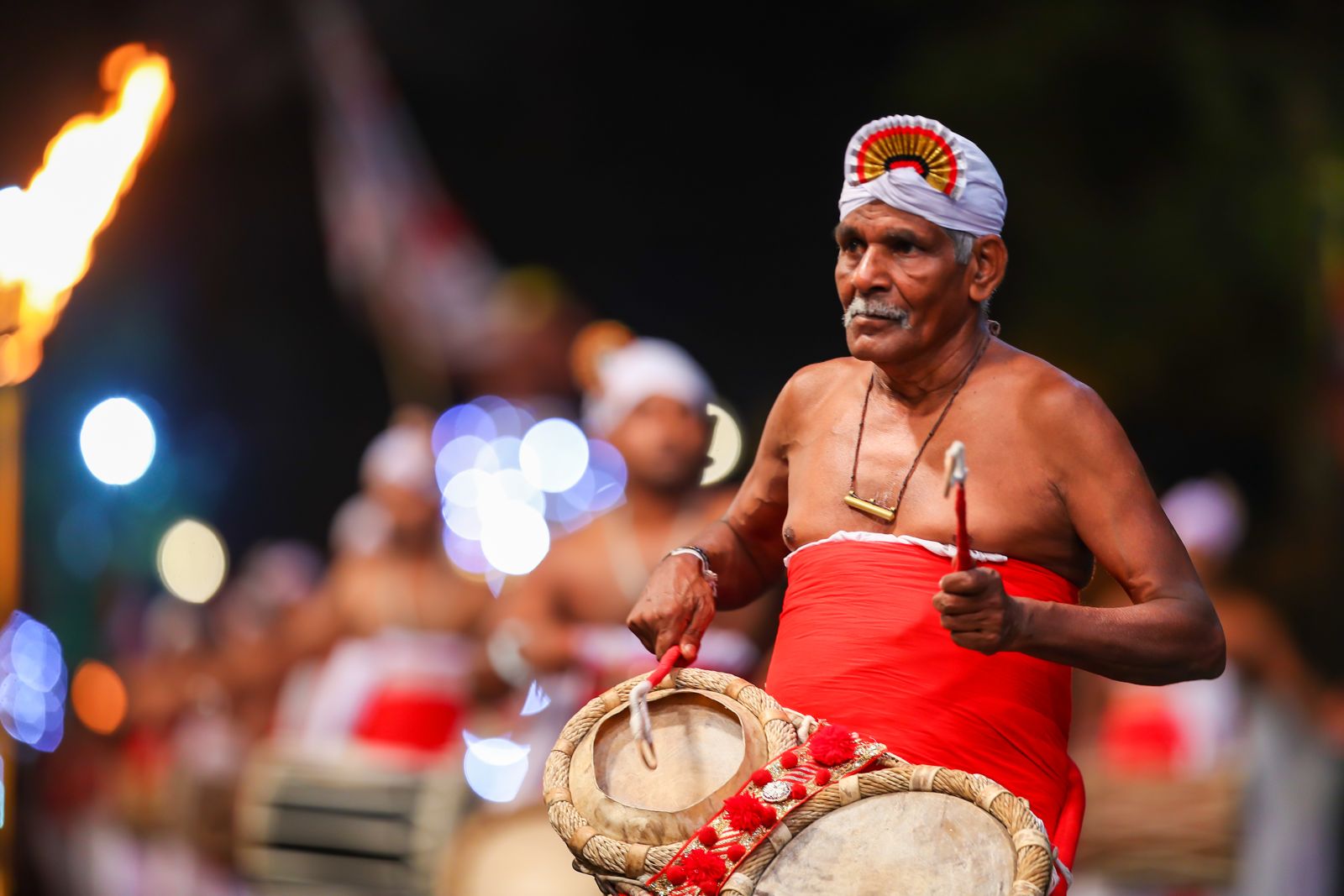


The Kandy Esala Perahera is more than a vibrant spectacle - it's a deeply symbolic ritual, where every drumbeat, movement, and tradition carries spiritual and cultural meaning. Spanning ten unforgettable nights, this festival builds in intensity and splendor, culminating in the breathtaking Randoli Perahera on the final night. As the streets of Kandy come alive, so too does the story of Sri Lanka’s rich heritage, told through sacred symbols, rhythmic dances, and ceremonial processions.
At its core, the Perahera is held to honor and venerate the Sacred Tooth Relic of the Buddha, believed to bring blessings, protection, and peace to the land. The relic, enshrined in a golden casket, is paraded through the streets to allow the public to pay homage, symbolizing the connection between the spiritual and earthly realms. The event also seeks divine blessings for timely rain and a prosperous harvest, echoing ancient agrarian rituals.
The procession itself is a living canvas of traditional Sri Lankan art forms. Each element - from the elephants to the dancers - holds symbolic meaning. The elephants, especially the majestic Maligawa Tusker, represent strength, wisdom, and the guardianship of sacred relics. Dressed in vibrant, ceremonial garments and illuminated by lights, they carry the spiritual weight of the festival with grace and grandeur.
Equally mesmerizing are the traditional Kandyan dancers, each performing with unique style and purpose. The ves dancers, adorned in ornate white costumes with silver headdresses, represent purity and spiritual dedication. Their refined, rhythmic movements are offerings of devotion, traditionally performed only by those initiated through religious vows. The naiyandi dancers, wearing bright, flowing costumes, perform ceremonial movements that are often used to invoke blessings before sacred rituals. Their dance is celebratory, calling on divine energy and setting the tone for the evening.
Adding power and intensity to the procession are the fire dancers, who symbolize purification and the elemental force of transformation. Their daring performances with flaming torches and spinning fire wheels are not merely for show - they reflect the overcoming of darkness through spiritual light. Meanwhile, the whip crackers open the procession with loud, echoing snaps, believed to drive away evil spirits and signal the beginning of the sacred parade.
Traditional drummers, especially the Geta Beraya drummers, provide the rhythmic heartbeat of the Perahera. Their patterns are not random beats - they are precise ceremonial rhythms that align with specific dance forms and spiritual themes, guiding both performers and viewers through the experience.
Flags, banners, torchbearers, and temple officials further add to the sacred procession, each holding a specific position that reflects centuries - old temple protocols and ancient hierarchies. The coordinated presence of Buddhist monks, Hindu deities' shrines, and temple guardians within the parade illustrates the religious harmony and mutual respect embedded in Sri Lankan culture.
As the Perahera progresses through the city’s streets, it becomes more than just a visual feast. It’s a spiritual journey that symbolizes the balance of nature, the honoring of ancestors, and the sacred bond between the people and their faith. The rhythmic music, sacred flames, and flowing movements work together to create a mystical atmosphere that transcends time.
In essence, the Kandy Esala Perahera is not simply a cultural event - it's a sacred narrative expressed through performance. It reflects the devotion of a nation, the artistry of its people, and the timeless respect for spiritual heritage. Witnessing this grand celebration is to step into a story that is still very much alive - a rare and soul - stirring experience that resonates long after the final drumbeat.





Experiencing the Kandy Esala Perahera is like stepping into the living soul of Sri Lanka. This vibrant celebration is more than just a festival - it's a powerful display of the island’s centuries - old traditions, spiritual devotion, and artistic excellence. From sacred rituals to mesmerizing dance performances, the Perahera offers a rare, immersive window into Sri Lanka’s rich cultural identity. Whether you're a curious traveler or a culture enthusiast, this festival promises a journey through living history you won’t find anywhere else.
Few events on earth can match the sheer scale and enchantment of the Kandy Esala Perahera. Recognized as one of Asia’s most awe-inspiring religious festivals, it provides a front-row seat to a sacred celebration that merges pageantry with profound spirituality. Having explored global cultural treasures - from the Reindeer Herders’ Festival in Siberia to Día de los Muertos in Mexico and tribal rituals in Papua New Guinea - we can confidently say that the Perahera in Kandy remains one of the most unforgettable highlights. It’s not just a festival; it’s a spiritual phenomenon.
The magic of the Perahera is only enhanced by the scenic charm of Kandy, a city nestled among misty hills and emerald tea plantations. This UNESCO World Heritage Site is a destination in its own right, offering peaceful retreats and breathtaking landscapes. From the serenity of Kandy Lake to hikes through the Knuckles Mountain Range, the region offers countless opportunities for exploration and reflection. Surrounding temples, lush gardens, and cultural sites make Kandy a perfect base for anyone looking to experience both natural beauty and heritage in one unforgettable trip.



Planning to attend the Kandy Esala Perahera in 2025? This world-famous festival attracts thousands of local and international visitors each year. With the right preparation, you can fully enjoy the spiritual energy, cultural beauty, and vibrant atmosphere. Here are some essential tips to help you make the most of your Perahera experience.
The Kandy Perahera attracts huge crowds, and accommodations in Kandy fill up fast during the festival. Prices also tend to rise significantly. To secure the best lodging and viewing spots, it’s wise to book well in advance. If you plan to watch the procession without a ticket, aim to arrive no later than 2 PM to claim a good spot.
While attending the procession along the route is free, it often means standing for hours crowded with locals. We recommend opting for paid seating whenever possible. From experience, these offer better comfort and clearer views – especially during the grand finale. Make sure to get front-row seats, as other rows are often inside shops, distancing you from the main action. Don’t compromise on the best viewing experience. The final night, known as the Randoli Perahera, is the most spectacular, so reserving early is essential. On our tours, we ensure guests have prime spots for an enjoyable, unobstructed view.
Since this is a sacred event, modest attire is important. Wear light, breathable clothes suitable for warm weather, but make sure your shoulders and knees are covered. Also, be prepared for occasional rain.
Given the large crowds and tropical climate, bring water and snacks to stay hydrated and energized during long waits. Always keep a close watch on your belongings in crowded areas to ensure your safety.


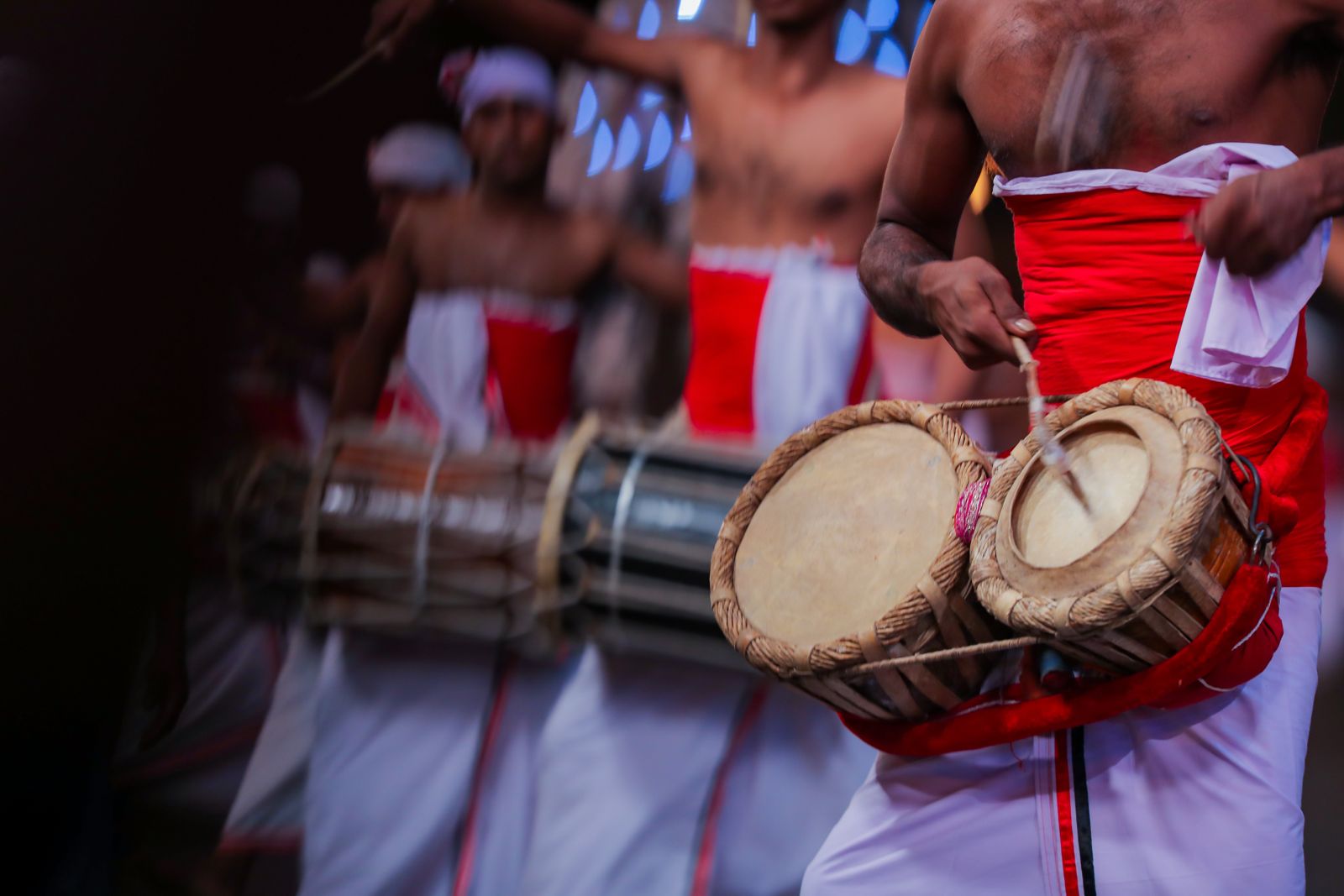

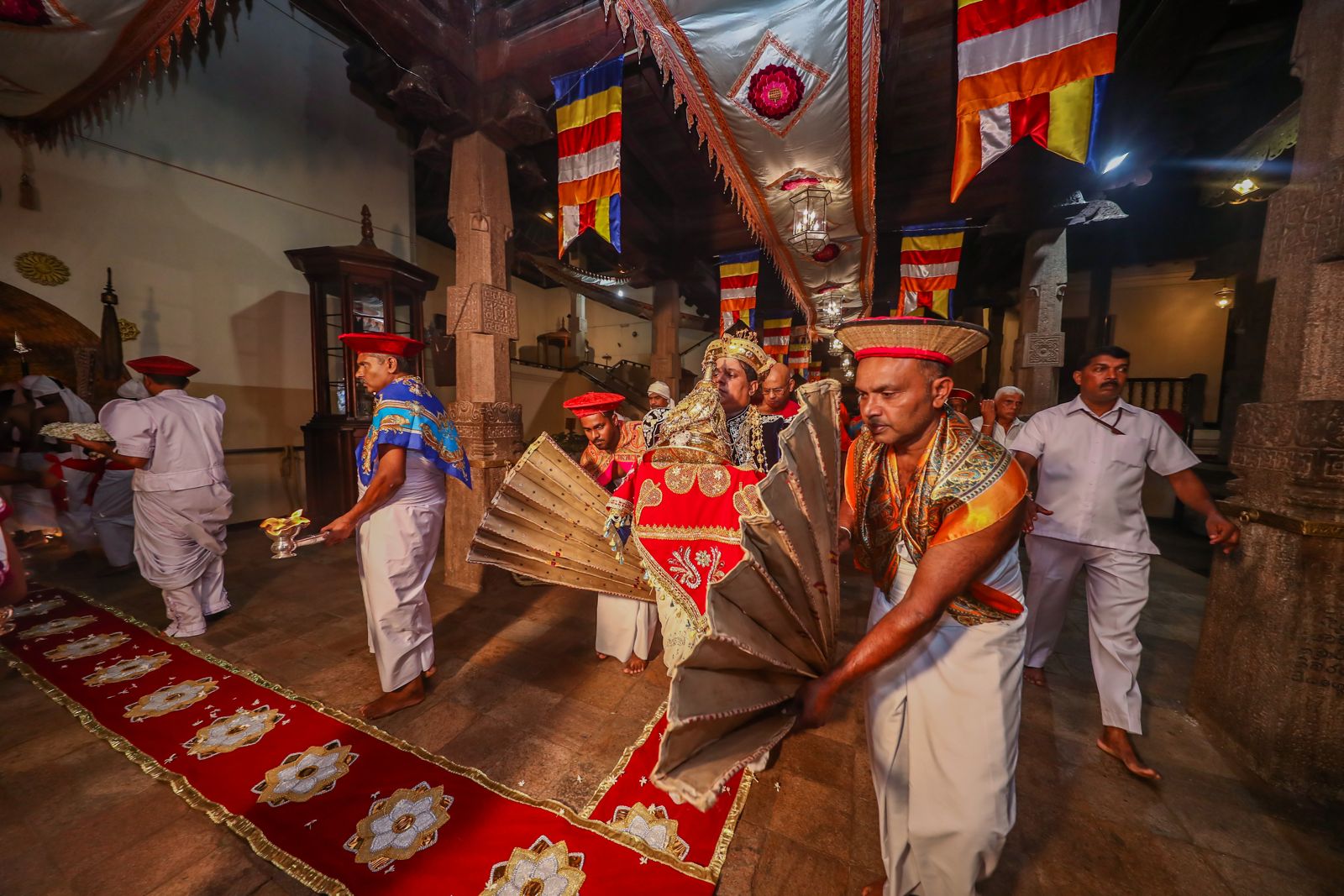
The Kandy Esala Perahera is one of the most anticipated cultural and religious events in Sri Lanka, and with that fame comes crowds - lots of them. During the festival period, particularly in the final five days leading up to the Randoli Perahera, the city of Kandy transforms into a bustling hub of pilgrims, tourists, locals, and media crews, all gathering to witness the grandeur of this sacred procession.
Hotels and guesthouses reach full capacity, restaurants overflow with guests, and the streets become a sea of people hours before the processions begin. The city's central roads - especially around Sri Dalada Maligawa (Temple of the Tooth) and the designated Perahera route - become completely pedestrianized and are lined shoulder-to-shoulder with eager spectators. On the final night, often considered the pinnacle of the festival, it’s not unusual for tens of thousands to line the streets well into the evening, cheering and soaking in the spiritual energy.
If you're planning to watch the Perahera from a free public spot, it’s essential to arrive as early to reserve a good place, especially if you want an unobstructed view. Many locals even camp out with mats and stools, turning the wait into a festive community experience. However, keep in mind that you'll be standing or sitting in the same spot for hours, often exposed to sun or rain, with limited access to restrooms or refreshments.
To avoid the discomfort of heavy crowds and long waits, many experienced travelers opt for paid viewing galleries or balcony seating, which offer comfort, safety, and a direct view of the parade. These spots are highly sought after, especially on the last three nights, so advance booking is crucial.
Despite the crowds, the energy is electric. There’s an undeniable sense of unity, reverence, and celebration in the air. The collective anticipation, the beating drums, the scent of incense, and the illuminated elephants create a once-in-a-lifetime atmosphere that’s impossible to replicate.
So, how crowded does Kandy get during the festival? The answer is: very crowded - but in the most unforgettable way possible. With a little preparation and early arrival, you can embrace the intensity of the crowds and become part of an ancient celebration that continues to inspire awe in all who witness it.



Absolutely - the Temple of the Sacred Tooth Relic (Sri Dalada Maligawa) becomes one of the busiest and most spiritually charged locations in Sri Lanka during the Kandy Esala Perahera. As the focal point of the entire festival, it draws thousands of pilgrims and visitors daily who come to pay their respects to the relic believed to hold a sacred tooth of Lord Buddha.
During the Perahera, the temple is especially crowded before and after the nightly processions, as devotees gather to witness the symbolic removal and return of the golden casket that represents the Tooth Relic. The atmosphere inside and around the temple during these times is one of intense reverence, anticipation, and spiritual energy - but also one of congestion and long queues.
For a more peaceful and personal experience, it’s best to plan your visit early in the morning, just after the temple opens. At this time, you can explore the beautifully adorned shrine rooms and ancient halls with fewer crowds and take in the serenity of the temple’s rituals in a more reflective setting. On our guided tours, we schedule the temple visit on the final day of the festival, after the ceremonies have concluded and the Tooth Relic has been respectfully returned to its chamber. This allows guests to absorb the sacredness of the space without the chaos of peak festival hours.
Nearby attractions such as Kandy Lake, the Bahirawakanda Buddha Statue, and the Royal Palace of Kandy also experience a surge in visitors during the Perahera period. The entire city becomes a hive of celebration and devotion, so expect heavy pedestrian traffic, limited parking, and occasional road closures due to the processions.
That’s why joining a well - organized tour can make all the difference. Our flagship Perahera tour includes carefully timed visits, insider tips, and local guides who stay informed about real-time traffic, closures, and crowd patterns - ensuring a smooth and stress-free festival experience.




The Kandy Esala Perahera is undoubtedly one of Sri Lanka’s most sacred and visually captivating festivals, drawing visitors from around the world with its colorful processions, traditional rituals, and spiritual significance. However, amid the grandeur, it’s important to consider the ethical questions that arise - particularly regarding the use of elephants in the celebrations. As responsible travelers and advocates for animal welfare, we believe it's essential to honor cultural traditions while also encouraging compassionate treatment of animals.
Elephants have been an integral part of religious ceremonies in Sri Lanka for centuries, long before tourism became a factor. Their presence in the Perahera is not a commercial attraction but a continuation of deeply rooted spiritual practices. Many of the elephants participating in the Perahera are temple elephants or are brought from rural temples, tea estates, and forestry departments. For their owners and handlers, having an elephant featured in the Perahera is considered a great honor and a sign of devotion. The most revered among them - the Maligawa Tusker - carries the sacred golden casket believed to contain the Tooth Relic of the Buddha, symbolizing the spiritual heart of the entire festival.
Ownership and care of elephants in Sri Lanka are regulated by a licensing system that has been passed down through generations. New licenses are rarely issued and can only be obtained after proving the ability to provide proper care for the animal. Mahouts, or elephant handlers, often inherit the responsibility from their ancestors and are trained from a young age to develop close bonds with the animals. While this tradition reflects a lineage of respect and stewardship, modern concerns about animal welfare prompt a deeper examination of how these elephants are treated during transportation, dressing, and long hours of participation in the processions.
It’s understandable that visitors may feel discomfort seeing elephants in ornate costumes, walking in chains, or standing in crowded conditions. These concerns are valid and point to the larger, ongoing conversation about balancing the preservation of ancient culture with evolving standards of animal welfare. The ethics of such practices are complex and sensitive, and we believe it’s important to engage with them thoughtfully rather than dismissively. Supporting cultural heritage and protecting animals are not mutually exclusive goals - they can and should coexist.
We encourage travelers to make informed decisions when attending the festival and to be mindful of the experiences they support. While the Perahera is rooted in religious reverence, some animal-based attractions in Sri Lanka, such as the Pinnawala Elephant Orphanage or certain coastal turtle hatcheries, operate more as commercial ventures than conservation efforts. These places often prioritize tourist entertainment over animal care, and we strongly discourage supporting such facilities. Instead, we recommend choosing ethical wildlife organizations that focus on habitat preservation, rehabilitation, and observation-based experiences without direct animal interaction.
At the heart of it, our goal is to promote travel that’s both respectful and responsible. The Perahera is a cultural treasure that deserves admiration, but it also invites reflection on how we engage with traditions in today’s world. By learning more, asking questions, and making compassionate choices, we can celebrate the richness of Sri Lanka’s heritage while supporting a future that honors both culture and kindness.





While the Kandy Esala Perahera is undoubtedly the crown jewel of Sri Lanka’s cultural calendar, your journey doesn’t have to end with the final night of the sacred procession. In fact, the days following the festival offer the perfect opportunity to continue your adventure and explore the island’s incredible diversity - from ancient cities and misty mountains to golden beaches and lush rainforests.
Our guided tours are specially designed to complement your Perahera experience, allowing you to immerse in the spiritual energy of the festival while uncovering Sri Lanka’s hidden gems and natural wonders. After witnessing the grandeur of the Sacred Tooth Relic parade, you can retreat into the cool, green heart of the Knuckles Mountain Range, just outside Kandy. Here, you’ll trek through cloud forests, cascading waterfalls, and charming hill villages untouched by time.
From there, journey deeper into Sri Lanka’s famed tea country, where you can wander through emerald tea estates, visit colonial - era factories, and enjoy highland hospitality over a cup of fresh Ceylon tea. The contrast from the vibrant chaos of the Perahera to the serene rhythm of plantation life is both refreshing and grounding.
For those drawn to the ocean, head east to places like Pasikuda, Nilaveli, or Pigeon Island, where warm turquoise waters invite you to snorkel, dive, or simply relax on unspoiled beaches. The post-Perahera period coincides with the dry season on the east coast, making it an ideal time to enjoy Sri Lanka’s marine beauty.
History lovers can also explore the island’s ancient marvels - including the rock fortress of Sigiriya, the sacred city of Anuradhapura, and the cave temples of Dambulla - all within easy reach of Kandy. These sites deepen your understanding of Sri Lanka’s spiritual and cultural roots, beautifully complementing what you witnessed during the Perahera.
Our small-group tours ensure a personalized and meaningful journey, led by local guides who share their insights, stories, and heritage with warmth and pride. You won’t just be a tourist - you’ll become part of the island’s living story. With carefully crafted itineraries, hand - picked accommodations, and the perfect blend of structure and freedom, your time in Sri Lanka will feel both effortless and unforgettable.
So why stop at the Perahera? Let the spirit of the Sacred Tooth Relic guide you onward, as you explore the landscapes, legends, and living culture that make Sri Lanka so extraordinary. Take a look at highlights from our 2024 tour to see how past travelers paired the awe of the festival with the magic of adventure - and imagine what your 2025 journey could become.


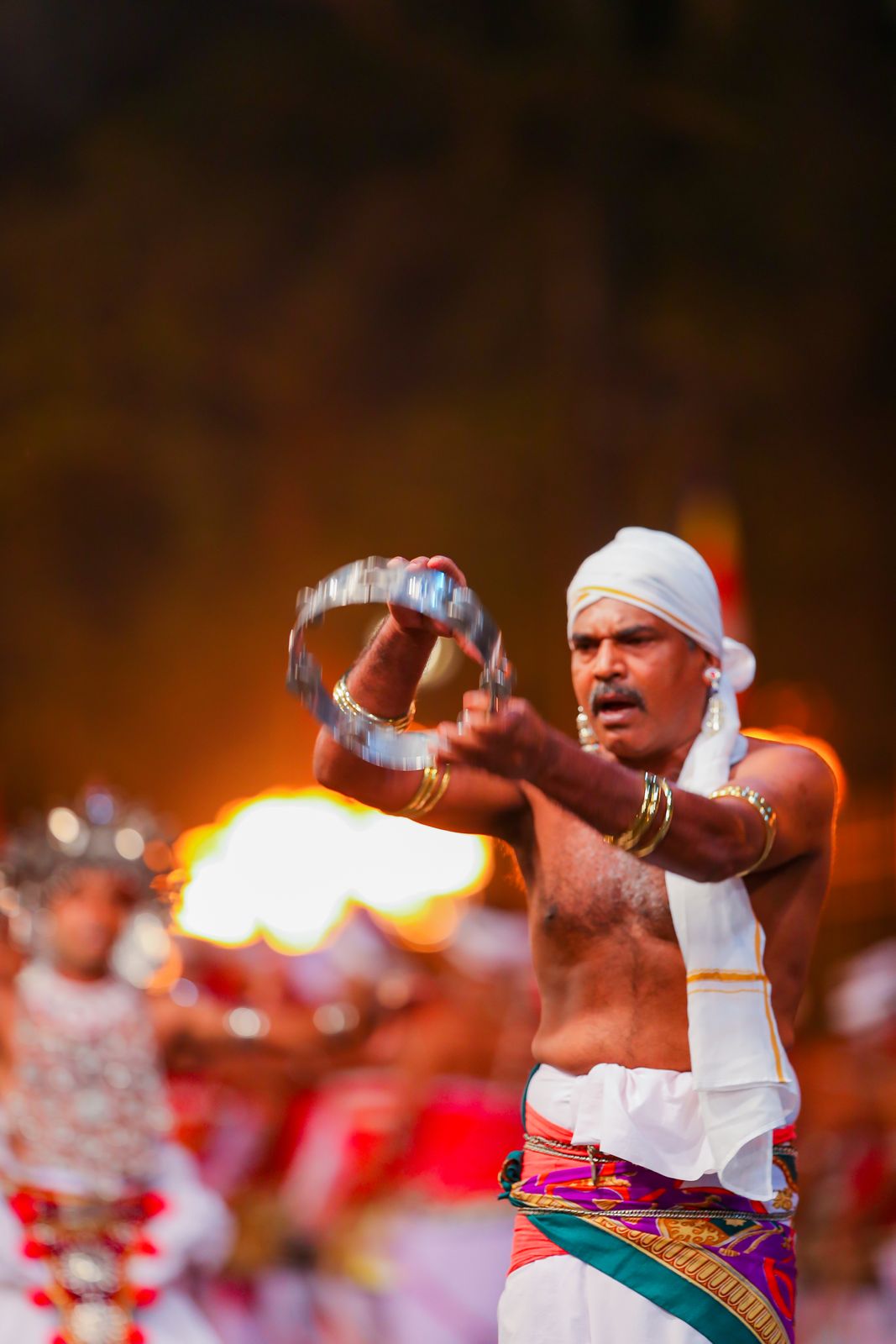
The Kandy Esala Perahera is not just a festival - it’s a spiritual journey, a living tapestry of ancient traditions, and a vivid celebration of Sri Lanka’s cultural soul. From the rhythmic thunder of traditional drums to the shimmering lights of elaborately adorned elephants, every moment of the Perahera pulses with devotion, history, and breathtaking beauty.
Attending this sacred event is more than witnessing a parade; it's stepping into the heart of a tradition that has endured for centuries. You’ll find yourself surrounded by locals in reverent silence, children watching in wide - eyed wonder, and travelers from around the world all drawn together by a shared sense of awe. It’s the kind of experience that stays with you long after the last torch has burned out.
Whether you're captivated by the spiritual symbolism, intrigued by the centuries - old rituals, or simply mesmerized by the pageantry, the Perahera is an invitation to connect with something deeper - a celebration of faith, unity, and cultural pride that’s unlike anything else on earth.
As your time in Kandy comes to a close, let the Perahera inspire you to explore even more of what this remarkable island has to offer. And when you're ready to turn your travel dreams into reality, our dedicated local team is here to guide you every step of the way. With expertly curated itineraries, cultural insights, and warm hospitality, we’ll help you discover not only the wonder of the Perahera, but the full beauty and diversity of Sri Lanka.
So why wait? Reach out to us today to learn more about our exclusive festival packages, guided cultural tours, and tailor-made journeys across the island. Let this be more than just a trip - let it be the adventure of a lifetime.




